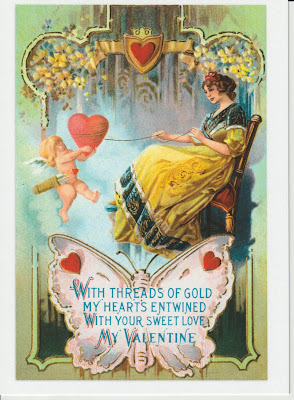Chapel of St. Aurelianus, Limoges, France
Here is another used postcard sent recently by a friend. The card is Editions Rene publication with a photograph by Chalou A. The Chapel of St. Aurelianus is the small building, with a clock face, at the left of the picture.
This chapel was built in 1471 to house the relics of Saint Aurelianus of Limoges who is believed to be the second bishop of Limoges. According to local traditional lore, Aurelianus was originally a pagan priest who wanted to imprison St. Martial, the first bishop. He was struck dead in his attempt to do so and Martial is supposed to have brought him back to life, baptized him as a Christian, ordained him a bishop, and consecrated him as bishop. Aurelianus died sometime between the 1st and 3rd centuries.
During the French Revolution the building was sold as a National Good to a member of the brotherhood of butchers. Aurelianus is the patron saint of butchers. Today the property held by the Confrérie Saint Aurélien, the successor organization of the ancient guild of butchers of Limoges.
In 1943 the chapel was listed as a Historic Monument.
Thank you, M, for sharing the card.
For additional information, see:
https://en.wikipedia.org/wiki/Aurelian_of_Limoges
https://en.wikipedia.org/wiki/Chapel_of_St._Aurelianus,_Limoges








